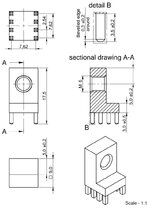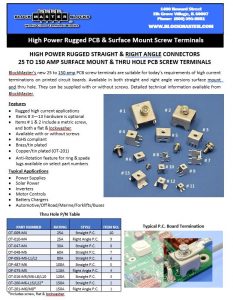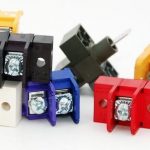with2ls
Junior Member level 3

I'm looking for a PCB screw terminal like this (or this exact one):

to connect a PCB to a busbar in a high current application. These are from a Meanwell RSP-2000-12.
Typically I would go to Keystone for something like this, but they don't have anything that is:
a. Soldered to the board
b. Reinforced to the board with screws.
Thanks!
to connect a PCB to a busbar in a high current application. These are from a Meanwell RSP-2000-12.
Typically I would go to Keystone for something like this, but they don't have anything that is:
a. Soldered to the board
b. Reinforced to the board with screws.
Thanks!




